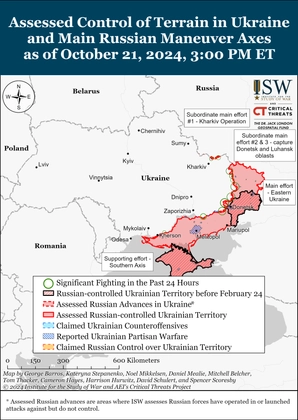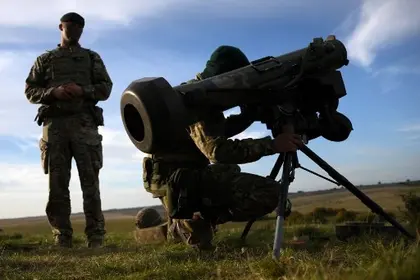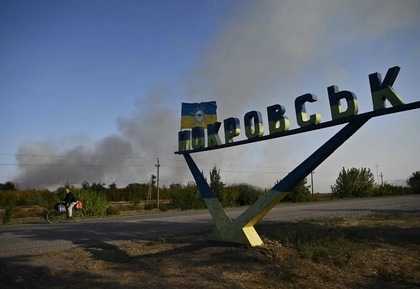The current developments in Russia’s war against Ukraine allow us to anticipate how the aggressor is going to act from now on. In response to the counteroffensive of the Armed Forces of Ukraine (AFU), the Kremlin has made considerable changes to the strategy and tactics of its war against our country.
On the one hand, Russia has ramped up its attempt to destroy Ukraine’s critical infrastructure. The Kremlin wants to freeze our country, cutting off the electricity during the cold winter. This is done to weaken Ukraine’s defense capabilities as much as possible, to demoralize Ukrainians, to break their will to resist, to cause a new multimillion wave of refugees to the EU countries, and thereby destabilize the socio-economic and political situation of our European partners. The disruption of the grain export deal is also aimed at weakening Ukraine economically.
JOIN US ON TELEGRAM
Follow our coverage of the war on the @Kyivpost_official.
This political decision was made six weeks ago, and the Kremlin was just looking for an excuse to act on it. At the same time, this is aimed at expanding the negotiating package in Russia’s negotiations with the West regarding the terms of ending the war in Ukraine. By means of economic and military blackmail (including threats of nuclear war), the Russian leader hopes to force the European Union and Ukraine to accept a peace deal on his terms.
Therefore, the seemingly peaceful rhetoric (but with a dash of the traditional criticism of the West and Ukraine) in Vladimir Putin’s speech at the Valdai Discussion Club on Oct. 27, as well as Russian Foreign Minister Sergey Lavrov’s statement about readiness for negotiations with Ukraine, is far from incidental. “Coercing into peace” with war and blackmail is a signature move of the Russian authorities.

ISW Russian Offensive Campaign Assessment, October, 22, 2024
On the other hand, the gradual mass mobilization of conscripts and the slow (so far partial and disguised) introduction of martial law have already begun in Russia. It will also apply to the economy – one can expect attempts to increase the production of various types of weapons and ammunition.
All this suggests that the Kremlin has placed its stakes on the escalation and prolongation of the war against Ukraine. It is going to try to crush Ukraine with its superiority in manpower. But to do so, it will be necessary to draft at least a million new conscripts – if not more – which will not be possible until next year. If Russian authorities manage to do it, then in a few months we can expect attempts to resume the offensive of Russian troops in certain directions, including Belarus’s direction with the possible participation of the Belarusian army.
The two directions of the Kremlin’s new strategy do not contradict one another. Ultimately, the escalation of the war is also aimed at forcing Ukraine to accept the peace deal on Russian terms, although ideally, Putin wants to turn the tide in his favor and try to win over as much of Ukraine as possible.
In light of this, some questions arise:
Above all, how well will the Kremlin’s new strategy work?
Firstly, can a hastily assembled, barely trained, and poorly equipped rabble be capable of performing successful military operations? Especially since most of these “warriors” do not seem very keen to join the battle. A real-life encounter with the blood and horrors of war can hardly strengthen their motivation. Can an army created by coercion win?
And yet another thought for the future: What will these spiteful Russian soldiers do when the war doesn’t end with their victory and they come back home in defeat?
Secondly, Ukraine and the West are not going to just sit back and watch the implementation of this new Russian strategy. Measures are already being taken to strengthen Ukrainian air defenses, to ensure quick restoration of the power grid, and shore up the defensive line near Belarus. The tactics of the AFU will also be adapted to the increased number of Russian military personnel in Ukraine. If more than a million Russians are drafted, Ukraine will have to undergo an additional round of mobilization as well.
The West will increase sanctions pressure on Russia, especially technological and secondary sanctions aimed at the Russian military-industrial complex. The West’s strategy is quite obvious and has been voiced repeatedly in various forms – at the very least, not to allow Russia to win this war, and at best, to contribute to the victory of Ukraine and the liberation of the occupied territories.
Thirdly, the implementation of this new strategy will inevitably cause various domestic problems in Russia. The first wave of mass mobilization – or “murderization,” as it is sometimes called – has already resulted in shock and a desire to flee the country for hundreds of thousands of Russians. It has also seriously increased the anxiety level among the population. The social tension has grown worse; various conflict situations along with economic and organizational problems have come to the surface. The resumption of mass mobilization, as well as an increase in the number of dead and seriously wounded on the Ukrainian front, will only increase the social and political tension that has already arisen in Russia.
Our predictions that the Russian military system was not ready for mass mobilization and would fail to provide the conscripts with the most basic equipment have been confirmed. Therefore, further mobilization will be carried out in stages.
This is already creating structural problems for the Russian economy; moreover, the greater the scale of mobilization, the stronger its negative effect on Russia’s socioeconomic situation.
Nevertheless, Russia’s escalation of the war in Ukraine may prolong hostilities. And one must be ready for that. The outcome of the war will be determined by the following factors: the effectiveness of each of the warring parties’ combat operations, the sufficiency of military-technical and economic support for Ukraine from its international partners, and the development of the domestic political situation in Russia.
The views expressed in this article are the author’s and not necessarily those of Kyiv Post.
You can also highlight the text and press Ctrl + Enter






